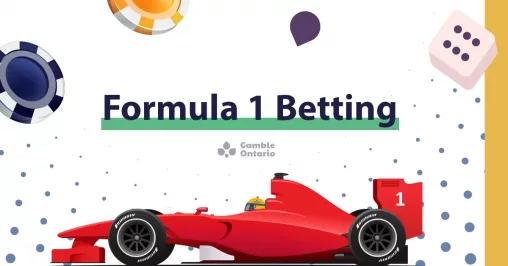What Is DRS in Formula 1?
Formula 1 is a highly technical sport with many unfamiliar words, rules, and countless unique technical elements. DRS is one such F1 item that crosses all three areas. The sport introduced DRS in the 2011 season to increase the chances of fans seeing the cars perform overtakes on track. The reduced aerodynamic drag allows a driver’s car to pass through the air with a reduced amount of downforce —the force that pushes a car down onto a circuit — and, therefore, higher speeds. Since its introduction, DRS has extended into other parts of the motorsport world, such as FIA Formula 2, FIA Formula 3, Japan’s Super Formula, and the German DTM series.
🟢 What Is DRS?
Formula 1’s Drag Reduction System, often used in its initialized form, DRS, is part of the sport’s aerodynamics designs to reduce a car’s downforce while increasing its speed, and thus chances of overtaking, on a track’s straights. In a dry qualifying session, any driver can use DRS on any lap to try and fight their way to the front row by reducing their lap time, thanks to the higher top speeds. However, during a dry Grand Prix, the driver must be close to the car ahead of them to benefit from the system. Furthermore, two racing laps from a race’s start or a safety car restart must elapse before they can benefit from the advantage DRS gives.
🔵 How Does DRS in Formula 1 Work?
The DRS system works by the driver pressing a button, which opens the flap on a car’s rear wing in a specific area of a track called the DRS zone. With the flap open, the car’s surface area is reduced, and that will aid air to flow more easily over the race car. If you have ever put your hand out of your own car’s window on a warm summer day and felt the forces of wind and oncoming air push it down when your hand points down, an F1 car’s rear wing works the same. However, you’ll notice less resistance when your hand is flat, which is the same aerodynamic theory as when F1 drivers use DRS on their cars.
🟡 When Is DRS Used?
In any dry Grand Prix race, a driver can use DRS on any straight F1 designates as a DRS activation zone. However, the gap between the racer and the car in front must be less than one second when they cross a pre-set detection point before the DRS zone. A driver’s steering wheel may show a light to signal they were within the one-second gap at the detection zone, and they’ll hear an audible beep in their in-helmet headset. You will also often hear the team radio between the drivers and their teams talking about closing the gap to the car in front to benefit from DRS.
The DRS zones remain in Qualifying and Free Practice sessions, but a driver doesn’t need to be within a second of another car to activate the system. This difference results in lap times during these sessions at circuits being quicker than in a race.
What Are The Benefits of Using DRS in Formula 1?
DRS allows drivers to overtake each other far more easily than without DRS. Tracks that are harder to pass on, such as Albert Park in Australia, now provide more entertainment for fans who see overtakes happening on the circuit rather than in the pit lane. In the past, before DRS, drivers would often rely on a pit-stop strategy to reach the top, which some fans saw as a failure of the rules.
Are There Any Drawbacks to Using DRS in Formula 1?
The purpose of DRS is to reduce the drag on a car that downforce creates. However, downforce is a requirement for the incredibly late-braking moves and logic-defying speeds F1 drivers can take around corners. When a car opens its DRS flap, it, in effect, turns into a hard-to-control machine that suddenly stops having maximum traction on the track surface. The problem this can cause is less downforce to attempt an overtake should the driver need to suddenly move left or right off of the racing line.
🔴 DRS Rules and Regulations
Although DRS is a relatively simple system to understand, as with many things in F1, there is page after page of rules detailing its usage. In 2023, the FIA’s Formula 1 Technical Regulations, which details everything from engine rules, gas flow usage, tire pressures, and more, outline DRS-specific rules in articles 3.10.10, 3.15.15, and 8.3.1. The FIA strictly enforces these rules; they even disqualified seven-time world champion Lewis Hamilton from Qualifying in Brazil 2021 for a DRS infringement.
Furthermore, the FIA material each F1 team receives ahead of each Grand Prix will always have a section explaining where drivers can use DRS on a track. You can find these FIA documents and any other regulatory news regarding a Grand Prix on the FIA site, should you wish to check them yourself.
When Can F1 Drivers Use DRS?
The driver must be within one second of the car in front during a race to use DRS in a DRS zone after the opening two laps, or they can use it at any time during Qualifying or Free Practice. The exception to the above comes when there is rain. Rain on the track reduces a Formula One car’s grip during acceleration, at top speeds, and when they turn. As such, to ensure the safety of the F1 drivers, the race director will decide whether the track is dry enough to use DRS. If a race has rain falling throughout its duration, it can result in DRS never being used. Although an area of the track with a yellow flag waving at it due to an accident must have a driver reduce their speed, the race director does not disable DRS as they do for rain.
Who Activates DRS in F1?
The driver activates DRS in Formula One by pressing a button on their steering wheel when they are within a second of the car in front during a race. In a Qualifying or Practice session, the driver can activate DRS whenever they enter a DRS zone.
How Many Times Can You Use DRS in F1?
A driver can use DRS as often as they like in Free Practice and Qualifying. In the race, a driver can also use DRS as many times as they want, as long as they are within one second of the car in front and are two laps from the race start or a race restart. Although there is no limit to the number of DRS activations a driver makes, some tracks have more DRS zones than others. These differences mean drivers technically will have more DRS usage in Bahrain or Canada, which have three DRS zones, than in Imola, which only has one.
Does DRS Open Automatically?
DRS does not open automatically. A dedicated button on an F1 car’s steering wheel controls an actuator device on the rear wing that moves the flap to an open or closed position. An F1 driver’s experience from competing in so many races may make it seem like DRS opens automatically, but it is just one of the dozens of jobs among everything else the drivers do. While DRS does not open automatically, it closes when the driver presses the brake pedal. Combining braking and DRS closing increases the speed at that a car slows down.
How Much Speed Does DRS Give?
F1 cars already travel at incredibly high speeds down long straights, but DRS can add a further 7.5 mph to those figures. These higher speeds will happen at the end of a DRS zone when a car has had a full straight to accelerate rather than for the duration of the DRS zone. In 2021, at the end of the Hangar Straight at Silverstone in the UK, Carlos Sainz reached 356 km/h, or 221 mph, thanks to having DRS.
Is The Race Leader Allowed to Use DRS?
The race leader is allowed to use DRS, but only if they are within one second of a car in front of them. As the driver in the lead of a race won’t have a direct rival fighting to be the winner of the race in front of them, they must wait for a DRS opportunity to come from a backmarker race car that is one lap behind.
🟣 What Are DRS Zones?
Drivers can use DRS in designated DRS zones. A polystyrene DRS sign at the side of the track and a white line on the circuit indicate the start of each DRS zone. A DRS zone will either be a straight on a circuit or a section of track where a driver can take any corners flat out.
🟠 What About DRS’ Impact on Racing?
DRS remains a contentious issue within the Formula One community. Although it has served its purpose in creating a lot more overtaking, some argue that it is not pure motorsport. Rather than attacking another driver by being braver on the brakes at a corner and potentially risking a crash before the end of a lap, the car behind can wait for a DRS zone.
On some tracks with many straights, such as Monza, the DRS zones can create what has become known as ‘DRS trains’ — long tailbacks of cars that each have DRS. Because the vehicle in front has DRS together with the attacking car, it brings little benefit to the attacking driver. During his time at Ferrari, four-time world champion Sebastian Vettel infamously suggested throwing bananas out of the cockpit like in Mario Kart would be a better idea than F1 racing with DRS. You can find many articles demonizing how DRS removes the purity from F1. However, there’s no disputing that DRS has increased the spectacle of entertainment for people watching on.
⭕ What Is The Future of DRS in Formula 1?
As many tracks on the F1 calendar expand to have more DRS zones, the system looks to have a permanent place within the sport. Every season has some changes to the placement of activation zones or their length as F1 tries to maximize the entertainment of every event. Melbourne, for example, expanded from three to four DRS zones in 2022. This year, 2023, even sees F1 trialling different DRS rules at six Sprint Race events where drivers must only wait for one lap after a race starts before using the system. If successful, this will expand to all the Grand Prix in 2024.
🏎️ Now That You Learned All About DRS, You May Also Be Interested in More F1 Guides








❓ FAQs About DRS in F1
How is DRS used in Formula 1?
DRS is used in Formula 1 to increase the top speed of cars during DRS zones on a track. This higher speed allows cars to overtake their rivals more easily in a race and set quicker lap times during Qualifying and Practice.
How does DRS affect the racing?
Racing with DRS sees more overtakes around the course of a lap rather than in the pit lane. Many drivers, for example, Max Verstappen, Lando Norris, and others, have never raced in F1 without DRS, so they cannot compare driving without the system.
How does DRS help the drivers?
DRS helps drivers close in on the car in front during a race, increasing the competition on the track. During a Qualifying or Free Practice, DRS helps the drivers set faster lap times.
Jim is a freelance motorsport journalist, editor, and podcaster. He's a content creator specializing in motorsport with 11+ years of experience across technical and creative positions. Jim has an impressive track record of writing race reviews and opinion pieces for Formula One. He's particularly proud of interviewing personalities from the motorsport industry.








